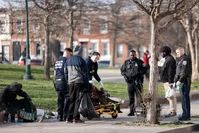- 9
- 32
- 9
- 20
- 2
- 16
- 6
- 17
- 17
- 21
- 11
- 32
- 5
- 11
- 9
- 26
- 22
- 42
- 8
- 19
- 41
- 54
OP starts with a typical cute twink post about how they need unions because some of them have been laid off. OP gets called out for being laid off, getting severance, got two job offers (one for $350k, a government job for $150k) in a month and was asking about taking both jobs to be overemployed. He then reveals he got laid off from one of them and the other one rescinded the offer (lol what?).
Some Euro starts talking about how great unions are and how he's in one. Later deletes his account out of shame most likely.
I am part of an union. And unemployment fund.
I highly, highly recommend.
Pay?
Oh lol. 50k @ 4yoe, but you cant straight up compare.
Cost structures are so different between EU and US. That 50k means very comfortable life. Not luxorious, but comfortable.
So you have a worse quality of life than someone in the US with 4 yoe and no union
... Uh, what? :D
Where did you get that "worse quality of life"? Out of your butt?
Because you said comfortable but not luxury. 4 yoe here you're making $150k most places.
QoL is much better in Europe for low wage earners though but not SWEs. It's common for european SWEs to want to move to the states.
That 50k takes you way further here than there.
As I said, you cant straight up compare.
It's just impossible to compare guys..
The average worker does absolutely not make 3x their European counterpart.
"European" is a very broad term. You have places where it's somewhat comparable, but souther down you go, the bigger the gap. From where I am, 40k€ per year is treated as very good, that's what a lot of surgeons make.

Fun fact: unions can include protections against offshoring as part of their negotiations! :D
Any examples of this working out in reality? What's to stop a business owner from shutting down an entire department and offshoring anyway, or paying a 3rd party company for their software instead of hiring devs onshore?
All the unions that have done this successfully in the past?

NBA players have a union that sets a minimum salary of $1.15M, shrug

Also some post with someone claiming to make $750k a year and wanting a union.
Better working conditions? I had ribs for lunch (free), I worked out in the middle of the day for 1.5 hrs, and I left work at 4pm. And I make almost $400,000 a year. No union would ever get me this job, that would only be reserved for the union leaders.
Just wait until the reorg happens, you're put on a team doing something you don't want to do with a manager who doesn't go to bat for you, and pushed with impossible deadlines. Oh, and half your team, many who you've worked closely with and became friends with, got laid off. It would be much better to have consistent working conditions. I make $750k (with free lunch too, whoopty shit) and this career is a fricking rollercoaster
- 7
- 10
It's cold in  and power companies are jacking up prices knowing the plebs will pay up to suffer a whit of chill in the soulless housing estate riddled with pyrite (not me btw lmao I live in an area built in the 1960s surrounded by pensioners)
and power companies are jacking up prices knowing the plebs will pay up to suffer a whit of chill in the soulless housing estate riddled with pyrite (not me btw lmao I live in an area built in the 1960s surrounded by pensioners)
How do you handle the cold? I hang heavy spools of blankets from my bed like pic related and stack woolen bed covers over my duvet. Thick underclothes of merino wool and socks along with my housecoat and a plush sleeping mask keep me nigh overheated at night  I'm saving hundreds of euros over these weeks. I only turn on the heating if I have guests over. I'm keeping
I'm saving hundreds of euros over these weeks. I only turn on the heating if I have guests over. I'm keeping 
- 7
- 21
- 1
- 11
- 86
- 173
In which dope fiends literally try to fight off the police from administering Narcan to their friends because they paid good money for those drugs and you should let people enjoy things, and the journos sympathize with them. 
 Police officers such as "The Narcan Fairy" and another officer who has administered more than 100 doses terrorize Kensington bums with the horrible gift of sobriety.
Police officers such as "The Narcan Fairy" and another officer who has administered more than 100 doses terrorize Kensington bums with the horrible gift of sobriety.
She said she had particular concerns about Petty, having witnessed his overuse of naloxone. "He's known for that. You can be sleeping, and he's going to Narcan you," she said.
Still, other harm-reduction providers said they have faced the ire of people who showed all the signs of overdose and were revived, only to argue that they hadn't needed Narcan in the first place.
Zuggi said that SEPTA has received no complaints about Petty, or any other officer, in connection with naloxone.
On the contrary, Zuggi said, Petty is in line for a commendation for his work with people in addiction.
 We love our law enforcement.
We love our law enforcement.
Some in Kensington say police are using Narcan on people who aren't overdosing
One morning this summer, Roxy was sleeping on the sidewalk in Kensington.
The next minute, she said, "I thought I was in heck."
A police officer, she soon learned, had dosed her with the overdose-reversing drug naloxone. The lifesaving medication blocks the potentially deadly effects of opioids — but also can send people who use drugs, as Roxy does, into immediate, painful withdrawal.
The 49-year-old woman, who declined to give her last name because she feared retribution, said she had not been overdosing. She said some police wielded naloxone callously, to prod people to comply with orders to clear the sidewalk — and she believed that's what had happened to her.
The sudden withdrawal sent her to the hospital in agony, she said. "I told the doctor, 'Either kill me or give me something for the pain.'"
Naloxone nasal spray, better known by the brand name Narcan, was approved by the FDA in 2015, and has reversed thousands of overdoses in Philadelphia. The city has distributed more than half a million doses to residents, drug users, and community groups to mitigate the death toll of the opioid crisis.
But amid Mayor Cherelle L. Parker's Kensington crackdown, some people are accusing police of administering the nasal spray, or threatening to do so, on people who are not overdosing as a way to extract compliance or punish resistance. A dozen people who spoke with The Inquirer said they had personally witnessed or experienced what they deemed dubious naloxone use by Philadelphia city or transit police.
Some harm-reduction providers were particularly incensed by a video circulating online, from March, that showed a SEPTA police officer repeatedly telling a man to get off the steps of a Market-Frankford El station. Then, when he didn't get up, the officer dosed him with naloxone.
Heather, who declined to give her last name for fear of retribution, said she has witnessed police unnecessarily deploying naloxone many times since she became homeless in Kensington in 2020.
She has also overdosed, and received Narcan, several times. The medication saved her life — but left her in anguish. "You feel like your soul is being ripped out of you, and you can't stop it. It's like the worst symptoms you've ever had, all at once."
As a result of the painful withdrawal, people who have been given naloxone are likely to use again, putting them at risk for another overdose.
One recent evening, she said, she climbed on top of her sleeping friend to block officers who were attempting to dose her.
The setting is a section of the city, centered along Kensington Avenue, where public drug use is rampant and police officers walking foot beats essentially supervise hundreds of unhoused people in addiction. Overdoses and other medical episodes are routine.
Drug arrests remain well below pre-pandemic levels, despite occasional sweeps targeting people for narcotics offenses and open warrants.
Instead, many officers spend their shifts dispersing crowds of drug users, only for another crowd to return to the spot hours later, according to an Inquirer review of hundreds of hours of livestreamed footage from Kensington and Allegheny Avenues. When a person in a drug-induced haze doesn't react to orders to disperse, officers often use their gloved fist or a nightstick to rub the person's sternum, a painful but effective wake-up call.
Kelsey Leon, a harm-reduction organizer with the Community Action Relief Project, said that in recent months she has heard more complaints of officers threatening naloxone use while on those rounds. Some people living on the street in Kensington, she said, dubbed one particularly aggressive officer "The Narcan Fairy."
In other cases, harm-reduction providers — some of whom have personally reversed hundreds of overdoses — said failures in training had led to police misuse of naloxone. They blamed misinformation, as well as confusion stemming from the unpredictable effects of various animal sedatives in the street drug supply. Those tranquilizers, such as xylazine, can cause people to be heavily sedated, and are not affected by naloxone since they are not opioids.
Philadelphia police and SEPTA representatives said officers are trained to deploy the medication when appropriate — and, when in doubt, to err on the side of administering naloxone.
"It is safer to administer the naloxone and rule out opioids than it would be to not administer the drug and delay potentially lifesaving medication," Philadelphia police spokesperson Sgt. Eric Gripp said.
Learning curve
Overdoses began spiking in Philadelphia nearly a decade ago as fentanyl, the ultra-potent synthetic opioid, replaced heroin on the streets. The same year that naloxone nasal spray hit the market, 2015, the Philadelphia Police Department began training officers on how to identify the symptoms of an overdose and properly administer the medication.
It was not unusual, in the early years, to see the learning curve play out on Kensington Avenue. Drug users occasionally fended off overzealous cops who, mistaking an opioid-induced stupor for a deadly overdose, were readying the nasal spray.
Today, thanks to city efforts, the lifesaving drug is now abundant in Philadelphia. City agencies distributed 117,000 doses last year alone, while emergency medical providers and firefighters directly administered about 6,400 doses, and the police more than 100.
More than 1,600 Philadelphia police officers carry the medicine on their beats, including 65% of the Kensington patrol.
Police are called on to administer the medication relatively rarely these days, city data show, as many people who use drugs carry the medication themselves. Experts say the widespread availability of naloxone has contributed to a modest decline in overdose deaths in Philadelphia. They were down about 7% last year from 2022's all-time high of 1,413 deaths. (Nationally, overdose deaths fell 10%, according to the National Center for Health Statistics.)
But nearly a decade into the fentanyl crisis, police officers and paramedics still face disputes over whether people are overdosing or simply in a state of heavy sedation.
"It's not always that straightforward [to diagnose]," said Jeanmarie Perrone, director of the Center for Addiction Medicine and Policy at Penn Medicine. Signs of overdose include pinpoint pupils, lethargy, and decreased breathing — with slowed or stopped respirations being the most critical factor. But some diagnoses are clear-cut: "If someone can say a few words, they don't need Narcan."
And even from one agency to the next, training protocols vary.
The Philadelphia police directive indicates that naloxone is to be administered to people who are "unresponsive." It states that people who have no pulse are never to be administered naloxone — even though medical researchers are still studying whether the drug could improve the survival rates of people in opioid-related cardiac arrest.
On the other hand, SEPTA's Transit Police, who have contended with a surge in drug activity on train and bus lines since the pandemic, follow a policy that defines overdose symptoms far more broadly: "lack of or labored breathing, unconscious or semiconscious, pinpoint pupils, confusion, and presence of drug paraphernalia."
Perrone said that it would be important for responders to consider those symptoms in context before reaching for naloxone. For instance, "I would hardly call [confusion alone] a reason to do it in the community," she said. "Generally, that might suggest that somebody is awake."
One officer. 'Well over 100' doses.
SEPTA police administered more than 350 doses in the first half of this year. That puts the agency on track to deliver six times the naloxone in 2024 than the far larger Philadelphia Police Department administered in all of last year.
The video of the SEPTA Transit Police officer that drew criticism this year is one of the few documentations of a disputed Narcan incident. Twenty minutes of body-worn camera footage viewed by The Inquirer shows a more complicated encounter than the brief clip circulating online.
On March 8, Officer Darren Petty found a man lying unresponsive under the stairs at Allegheny Station in Kensington. For several minutes, he tried to wake the man up.
While the man was unconscious, his skin did not appear discolored. It was not clear that Petty checked his breathing. "I'mma hit you with Narcan to make sure you're alive," Petty told him after a few minutes, "cuz you keep going in and out."
Petty dosed him with the nasal spray. He called for a medic over his police radio, then turned the man on his side. "You were dead on the platform, man," he told the man, who refused medical care.
Petty helped the man out of the train station. But, minutes later, Petty encountered him again, sitting on the steps outside. That's when a bystander began filming as Petty told the man to leave. But the man didn't heed the officer's orders and appeared to doze off. Petty gave him another dose of naloxone.
Reached by phone, Petty said he acted as necessary to save the man's life. "Obviously it worked," he said.
He said he's administered naloxone "well over 100 times" in his two years working as a SEPTA transit officer.
"All addicts will tell you you shouldn't use it until the person stops breathing, but at that point you're not using naloxone — you'd be conducting CPR," he said. His concern, when he encounters people who appear to be high, is "to make sure [they] don't slip into a coma state," he said.
SEPTA Transit Police Inspector James Zuggi praised Petty's handling of the situation.
"It's better to be safe," Zuggi said. "They have a job to go out there and try to save this individual's life. The days of walking past them are gone. We're trying to help."
Both PPD and SEPTA train officers not to wait until a person stops breathing to administer naloxone.
But Rosalind Pichardo, who has personally reversed more than 2,400 overdoses and trained thousands of people on how to administer Narcan through her nonprofit, Operation Save Our City, was skeptical.
She views the signs of overdose as straightforward: If someone is turning blue or struggling to breathe, they need naloxone. If not, they probably don't.
She said she had particular concerns about Petty, having witnessed his overuse of naloxone. "He's known for that. You can be sleeping, and he's going to Narcan you," she said.
Still, other harm-reduction providers said they have faced the ire of people who showed all the signs of overdose and were revived, only to argue that they hadn't needed Narcan in the first place.
Zuggi said that SEPTA has received no complaints about Petty, or any other officer, in connection with naloxone.
On the contrary, Zuggi said, Petty is in line for a commendation for his work with people in addiction.
The tranq effect
Better training could lead to fewer disputes, both harm-reduction experts and medical professionals said. The Philadelphia police naloxone training course runs 30 to 45 minutes. The training run by Savage Sisters, by contrast, takes two hours.
Harm-reduction providers in Kensington said that today they still hear rampant misinformation about naloxone — much of it from police and other responders.
One recent myth held that, because of the xylazine and other tranquilizers contaminating the drug supply, at least two doses of naloxone are needed to reverse an overdose. Another myth: Giving naloxone to someone who has ingested tranq would be fatal.
Pichardo said she has had productive conversations, particularly with rookie police, about how to identify and respond to overdoses.
But other harm-reduction providers described clashes with police and paramedics over how to help people.
Thomas Frey, an organizer with the Everywhere Project, a volunteer-run group, said in June he was checking on a friend who was unconscious, but breathing normally, when "the cops pushed me out of the way and gave him Narcan. I said, 'All you did is put him in precipitated withdrawal. Now he's gonna be in agony when he wakes up.'"
He also described seeing a different officer use the nasal spray on a man who was conscious but not following an order to clear the sidewalk.
Police "warned him two or three times. He wasn't moving. And so they shot it up his nose," Frey said. The man got up and trudged away. "That's certainly how you get someone agitated."


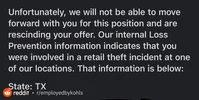


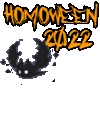
 rescinds redditor's offer for seasonal
rescinds redditor's offer for seasonal  employment due to theft
employment due to theft  . Redditor pulls a Pizzashill
. Redditor pulls a Pizzashill 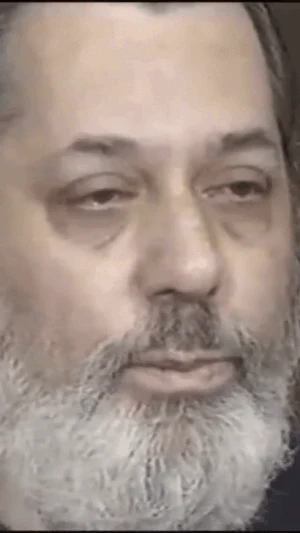 and shows their Tiktok
and shows their Tiktok  revenue to dunk
revenue to dunk 
 neighbors cook stinky
neighbors cook stinky  poop
poop  for dinner, redditors
for dinner, redditors  tell them that poop
tell them that poop  is yummy and smells good
is yummy and smells good  actually
actually
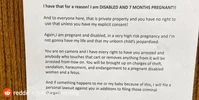
 AND DISABLED
AND DISABLED  future homeless person's
future homeless person's  shopping cart, posts meltdown note
shopping cart, posts meltdown note  to hovel door.
to hovel door.







 share what other Rentoids
share what other Rentoids 






 discuss whether or not being able to buy Funkos
discuss whether or not being able to buy Funkos  , door dash
, door dash  should be covered under "living wage"
should be covered under "living wage"
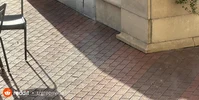


 squeal as Landchad
squeal as Landchad  from the renthogs
from the renthogs  every month
every month



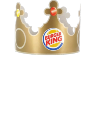












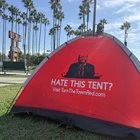




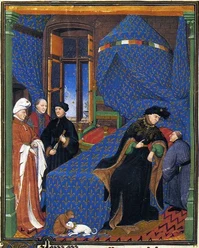





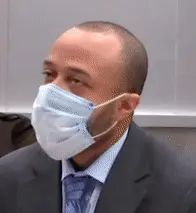 rants about defending
rants about defending  entitled poors day in and day out
entitled poors day in and day out 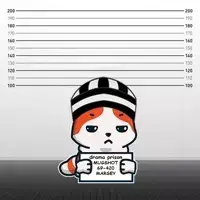
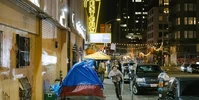

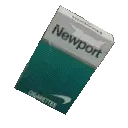 Rentoid Lungcel Redditor
Rentoid Lungcel Redditor  most oppressed people: BLACKED
most oppressed people: BLACKED  Lung smoker
Lung smoker  Chads
Chads 
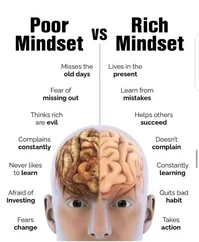


 the poor mindset
the poor mindset
